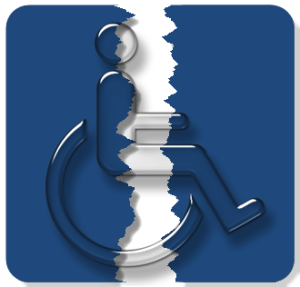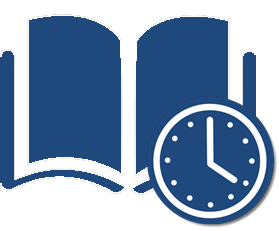Barriers to Accessibility
Rob Power
Case Studies
 Just because the Canadian federal government and some Canadian provinces have enshrined Accessibility legislation, does not mean “smooth sailing” for students seeking support in their learning journies. Sometimes, existing regulations and local policies can create barriers to Accessibility for students.
Just because the Canadian federal government and some Canadian provinces have enshrined Accessibility legislation, does not mean “smooth sailing” for students seeking support in their learning journies. Sometimes, existing regulations and local policies can create barriers to Accessibility for students.
Your Task
|
Case Study 1: Navi Dhanota vs York University
While she was a Ph.D. student in Critical Disability Studies at York University, Navi Dhanota challenged the university’s policies and practices regarding the documentation of accessibility requirements and the provision of accommodations. The subsequent Ontario Human Rights Commission (2015) ruling has significant implications for post-secondary institutions in Ontario, and beyond.
- What are those implications?
Background Readings

- CBC Radio (2016, January 13). After student’s complaint, mental health gets a rethink at York University. As it Happens. https://www.cbc.ca/radio/asithappens/as-it-happens-wednesday-edition-1.3402077/after-student-s-complaint-mental-health-gets-a-rethink-at-york-university-1.3402250
- Ontario Human Rights Commission (2016, January 6). New documentation guidelines for accommodating students with mental health disabilities. [Web page]. https://www.ohrc.on.ca/en/news_centre/new-documentation-guidelines-accommodating-students-mental-health-disabilities
- Zlomislic, D. (2016, January 12). York University student wins mental-health fight. Toronto Star. https://www.thestar.com/news/gta/york-university-student-wins-mental-health-fight/article_66afd88c-5287-5208-a607-7987777194ea.html
Watch Navi Dhanota discuss her experiences in an interview with Excalibur Publications (2016)
![]()
Excalibur Publications (2016, January 21). New Academic Accommodations Adopted by York’s CDS (Full interview with Navi Dhanota). [Video].
Case Study 2: Policy and Funding Causing Students with Accessibility Needs to “Fall Through the Cracks”
Despite seemingly robust legislation, and human rights rulings like in the Dhanota case, many students (especially in K12 systems) continue to struggle to get the supports that they need to fully access learning opportunities. Ganfham (2024) and Galloway (2024) discuss broader issues of how local funding, staffing, and resource allocation policies are leaving some children “falling through the cracks.”
- While these broadcasts refer to a range of access issues, how do you see them impacting the leveraging of technology to facilitate Accessible learning?
Background Resources (Podcast and News Report)

- Galloway, M. (2024, February 26). What’s behind Canada’s teacher shortage? [Audio podcast]. The Current. https://www.cbc.ca/listen/live-radio/1-63/clip/16045008
- Note — this is a longer podcast, but there are specific references to redistributing resources — including resource teachers and teacher assistants/educational assistants away from serving children with accessibility needs to “backfill” classroom teacher shortages.
- Ganfham, Y. (2024, March 4). ‘We are falling through the cracks’: Kids with disabilities getting little support in Surrey schools, families say. CTV News Vancouver. https://bc.ctvnews.ca/we-are-falling-through-the-cracks-kids-with-disabilities-getting-little-support-in-surrey-schools-families-say-1.6794530
Case Study 3: Are Current Policy and Curricula Denying Students the “Right to Read?”
According to the Canadian Children’s Literacy Foundation (2024), “more than one million children in Canada are estimated to have below grade-level reading skills.” One group of students who are particularly susceptible to struggling with reading are those with Dyslexia, which is estimated to affect at least 10 to 20% of the population (Dyslexia Canada, n.d.). Despite impacting this large segment of the student population, the Ontario Human Rights Commission’s landmark Right to Read Report (2022) found that “Ontario is systematically failing students with reading disabilities and many other students” (p. 2) by “not using evidence-based approaches to teach students to read” (OHRC, 2022).
- Are current curricular policies and teacher training methods creating barriers to access to learning?
- What could/should we do? And how could we leverage technology to create better access to learning for students with Dyslexia?
Videos
![]()
Watch the Ontario Human Rights Commission’s summary of the Right to Read Report and its implications (OHRC, 2022).
OHRC (2022, February 28). Right to Read: It is time for change in Ontario. [Video].
It’s a bit of a longer video (34:27), but you may find it worthwhile to watch Dr. Jamie Metsala’s presentation to researchED Canada Halifax on the implications of the Right to Read report.
researchED Canada News (2022, December 18). Dr Jamie Metsala on “The Right to Read” (researchED Canada Halifax, Nov 12/22). [Video].
Shorter Reads

- Kovac, L. (2024, September 10). Disability Barriers for Students with Dyslexia. [Web page]. Accessibility for Ontarians with Disabilities Act. https://aoda.ca/disability-barriers-for-students-with-dyslexia/
- Langager, B. (2023, September 21). Saskatchewan human rights report highlights need for reading disability supports. Global News. https://globalnews.ca/news/9977256/sask-human-rights-report-reading-disability-supports/
- LDAO (2022). Learning Disabilities Association of Ontario Response to OHRC Right to Read Report. [PDF file]. https://www.ldao.ca/wp-content/uploads/LDAO-Right-to-Read-Detailed-Response-March-2022.pdf
- MSVU (2023, October 11). Reading disabilities are a human rights issue — Saskatchewan joins calls to address barriers. [Web log post]. The Conversation. https://www.msvu.ca/reading-disabilities-are-a-human-rights-issue-saskatchewan-joins-calls-to-address-barriers/
Longer Reads

- Ontario Human Rights Commission (2022). Executive Summary: Right to Read: Public inquiry into human rights issues affecting students with reading disabilities. [PDF file]. https://www3.ohrc.on.ca/sites/default/files/Right%20to%20Read%20Executive%20Summary_OHRC%20English_0.pdf
Case Study 4: AI and Accessibility: Benefit or Bane?
Power (2024) explains that ChatGPT (OpenAI, n.d.) has become one of the fastest-growing consumer educational technology tools in history (p. 3). He also notes that educational institutions continue to struggle with developing effective policies on the ethical academic use of AI tools by either educators or students. And, he notes that a major current problem is that “educators are unprepared for the use of such tools by their students… [and] preparing educators to effectively leverage AI agents, and to discourage their misuse, requires targeted supports” (p. 6). Participants in the Chat-T research study emphasized the importance of recognizing the “bias and lack of sources” and that “trust is a big issue” when using any AI tool (p. 9).
- Can AI tools create advantages for students with disabilities?
- What are the disadvantages?
- Do AI-based plagiarism detection tools create barriers to accessibility in education?
The Benefits of AI Tools

AI-based tools can benefit when leveraged for appropriate purposes. Wright (2021) predates the launch of ChatGPT, but discusses how such tools can increase access and engagement for students with disabilities in STEM education contexts.
- Wright, J. (2021, May 19). How AI can Unlock STEM Content for Students with Disabilities. [Web log post]. benetech. https://benetech.org/blog/ai-unlock-stem-content-students-disabilities/
Benefits and Challenges of AI and Accessibility

While the use of AI tools to deliver and engage with content may have its benefits, Bezyak et al. (2024) also note that there are a number of concerns.
- Bezyak, J. Chelsey, A., & Lister, A. (2024). ChatGPT and Disability: Benefits, Concerns, and Future Potential. [Report]. Rocky Mountain ADA Center. https://rockymountainada.org/resources/research/chatgpt-and-disability-benefits-concerns-and-future-potential
![]()
This longer video from The National Center for Learning Disabilities (28:08) also discusses some of the disadvantages of AI for students with accessibility issues.
The National Center for Learning Disabilities (2024, February 9). The Advantages and Disadvantages of AI for Individuals with Learning Disabilities. [Video].
AI Detection Tools and Accessibility

AI detection tools, like those integrated into Turnitin (2024), promise to help instructors detect when students have used tools like ChatGPT to produce writing that they have submitted as their own work for assignments. However, as Coley (2023), Ramlochan (2023), and UNBC CTLT (n.d.) point out, there are significant concerns about the accuracy of the positive and negative “hits” when scanning assignment submissions — particularly for students who are already traditionally disadvantaged.
- Coley, M. (2023, August 16). Guidance on AI Detection and Why We’re Disabling Turnitin’s AI Detector. [Web page]. Vanderbilt University. https://www.vanderbilt.edu/brightspace/2023/08/16/guidance-on-ai-detection-and-why-were-disabling-turnitins-ai-detector/
- Ramlochan, S. (2023, November 6). The Truth About AI Detectors – More Harm Than Good. [Web log post]. Prompt Engineering & AI Institute. https://promptengineering.org/the-truth-about-ai-detectors-more-harm-than-good/
- UNBC CTLT (n.d.). The Limitations of AI Detectors in Academic Settings. In An Instructor’s Guide to Teaching & Learning With Technology @UNBC. https://pressbooks.bccampus.ca/unbc/chapter/the-limitations-of-ai-detectors-in-academic-settings/
![]()
In this longer video recording (43:47) of her keynote presentation at the Canadian Network for Innovation in Education’s 2023 Annual Conference, Sarah Eaton takes an in-depth look at the concepts of AI, academic integrity, and what she refers to as the “age of postplagiarism.”
CNIE – RCIE (2023, August 16). CNIE 2023 Annual Conference Keynote Presentation Dr Sarah Eaton Looking Forward Academic Integrity in the Age of Artificial Intelligence and Postplagiarism. [Video].
Case Study 5: Silencing Student Voices
In her final year at Robert Bateman Secondary in Abbotsford, British Columbia, Lexis De Meyer was in the midst of investigating community accessibility challenges when she suffered an injury that forced her to use crutches. De Meyer soon discovered that navigating her own school presented barriers for students and teachers with accessibility needs. But, when she brought her concerns to the school administration, and created a mural and an artist’s statement about her experiences, De Meyer found herself censored.
- Is “at code” good enough?
- What messages does “we are at code” really convey?
- How many other voices are silenced in schools (K12 or Higher Ed) across Canada?

Read about De Meyer’s experience as covered for CTV News Vancouver by Paterson (2024):
- Paterson, S. (2024, June 28). Abbotsford student’s speech about accessibility challenges at her school censored by administrators. CTV News Vancouver. https://www.ctvnews.ca/vancouver/article/abbotsford-students-speech-about-accessibility-challenges-at-her-school-censored-by-administrators/
References
Bezyak, J. Chelsey, A., & Lister, A. (2024). ChatGPT and Disability: Benefits, Concerns, and Future Potential. [Report]. Rocky Mountain ADA Center. https://rockymountainada.org/resources/research/chatgpt-and-disability-benefits-concerns-and-future-potential
CBC Radio (2016, January 13). After student’s complaint, mental health gets a rethink at York University. As it Happens. https://www.cbc.ca/radio/asithappens/as-it-happens-wednesday-edition-1.3402077/after-student-s-complaint-mental-health-gets-a-rethink-at-york-university-1.3402250
Coley, M. (2023, August 16). Guidance on AI Detection and Why We’re Disabling Turnitin’s AI Detector. [Web page]. Vanderbilt University. https://www.vanderbilt.edu/brightspace/2023/08/16/guidance-on-ai-detection-and-why-were-disabling-turnitins-ai-detector/
Dyslexia Canada (n.d.). Dyslexia Basics. [Web page]. https://www.dyslexiacanada.org/en/dyslexia-basics/
Excalibur Publications (2016, January 21). New Academic Accommodations Adopted by York’s CDS (Full interview with Navi Dhanota). [Video]. https://youtu.be/pBHp5NBSaH0
Galloway, M. (2024, February 26). What’s behind Canada’s teacher shortage. [Audio podcast]. The Current. https://www.cbc.ca/listen/live-radio/1-63/clip/16045008
Ganfham, Y. (2024, March 4). ‘We are falling through the cracks’: Kids with disabilities getting little support in Surrey schools, families say. CTV News Vancouver. https://bc.ctvnews.ca/we-are-falling-through-the-cracks-kids-with-disabilities-getting-little-support-in-surrey-schools-families-say-1.6794530
Kovac, L. (2024, September 10). Disability Barriers for Students with Dyslexia. [Web page]. Accessibility for Ontarians with Disabilities Act. https://aoda.ca/disability-barriers-for-students-with-dyslexia/
Langager, B. (2023, September 21). Saskatchewan human rights report highlights need for reading disability supports. Global News. https://globalnews.ca/news/9977256/sask-human-rights-report-reading-disability-supports/
LDAO (2022). Learning Disabilities Association of Ontario Response to OHRC Right to Read Report. [PDF file]. https://www.ldao.ca/wp-content/uploads/LDAO-Right-to-Read-Detailed-Response-March-2022.pdf
MSVU (2023, October 11). Reading disabilities are a human rights issue — Saskatchewan joins calls to address barriers. [Web log post]. The Conversation. https://www.msvu.ca/reading-disabilities-are-a-human-rights-issue-saskatchewan-joins-calls-to-address-barriers/
The National Center for Learning Disabilities (2024, February 9). The Advantages and Disadvantages of AI for Individuals with Learning Disabilities. [Video]. https://youtu.be/BnwxFGTsy04
OHRC (2022, February 28). Right to Read: It is time for change in Ontario. [Video]. https://youtu.be/iney0cEpx24
Ontario Human Rights Commission (2016, January 6). New documentation guidelines for accommodating students with mental health disabilities. [Web page]. https://www.ohrc.on.ca/en/news_centre/new-documentation-guidelines-accommodating-students-mental-health-disabilities
Ontario Human Rights Commission (2022). Executive Summary: Right to Read: Public inquiry into human rights issues affecting students with reading disabilities. [PDF file]. https://www3.ohrc.on.ca/sites/default/files/Right%20to%20Read%20Executive%20Summary_OHRC%20English_0.pdf
OpenAI (n.d.). ChatGPT. [Software application]. https://chat.openai.com
Paterson, S. (2024, June 28). Abbotsford student’s speech about accessibility challenges at her school censored by administrators. CTV News Vancouver. https://www.ctvnews.ca/vancouver/article/abbotsford-students-speech-about-accessibility-challenges-at-her-school-censored-by-administrators/
Power, R. (2024). Evaluating Graduate Education Students’ Self-Efficacy with the Use of Artificial Intelligence Agents. Journal of Educational Informatics, 5(1), 3-19. https://journalofeducationalinformatics.ca/index.php/JEI/article/view/269
Ramlochan, S. (2023, November 6). The Truth About AI Detectors – More Harm Than Good. [Web log post]. Prompt Engineering & AI Institute. https://promptengineering.org/the-truth-about-ai-detectors-more-harm-than-good/
researchED Canada News (2022, December 18). Dr Jamie Metsala on “The Right to Read” (researchED Canada Halifax, Nov 12/22). [Video]. https://youtu.be/uVmD-fvQ7EI
Turnitin (2024). Empower students to do their best, original work. [Web page]. https://www.turnitin.ca/
UNBC CTLT (n.d.). The Limitations of AI Detectors in Academic Settings. In An Instructor’s Guide to Teaching & Learning With Technology @UNBC. https://pressbooks.bccampus.ca/unbc/chapter/the-limitations-of-ai-detectors-in-academic-settings/
Wright, J. (2021, May 19). How AI can Unlock STEM Content for Students with Disabilities. [Web log post]. benetech. https://benetech.org/blog/ai-unlock-stem-content-students-disabilities/
Zlomislic, D. (2016, January 12). York University student wins mental-health fight. Toronto Star. https://www.thestar.com/news/gta/york-university-student-wins-mental-health-fight/article_66afd88c-5287-5208-a607-7987777194ea.html
 If you are participating in one of my instructional design or educational technology courses, you’re asked to choose at least one (1) of the following case studies to review in detail, and be prepared to discuss it with the class. (Of course, you are welcome to review them all!). You will be provided with a link where you can add your name to “sign up” for one of the case studies (to ensure that we have a roughly even number of people to discuss each case study as part of a breakout activity!)
If you are participating in one of my instructional design or educational technology courses, you’re asked to choose at least one (1) of the following case studies to review in detail, and be prepared to discuss it with the class. (Of course, you are welcome to review them all!). You will be provided with a link where you can add your name to “sign up” for one of the case studies (to ensure that we have a roughly even number of people to discuss each case study as part of a breakout activity!)